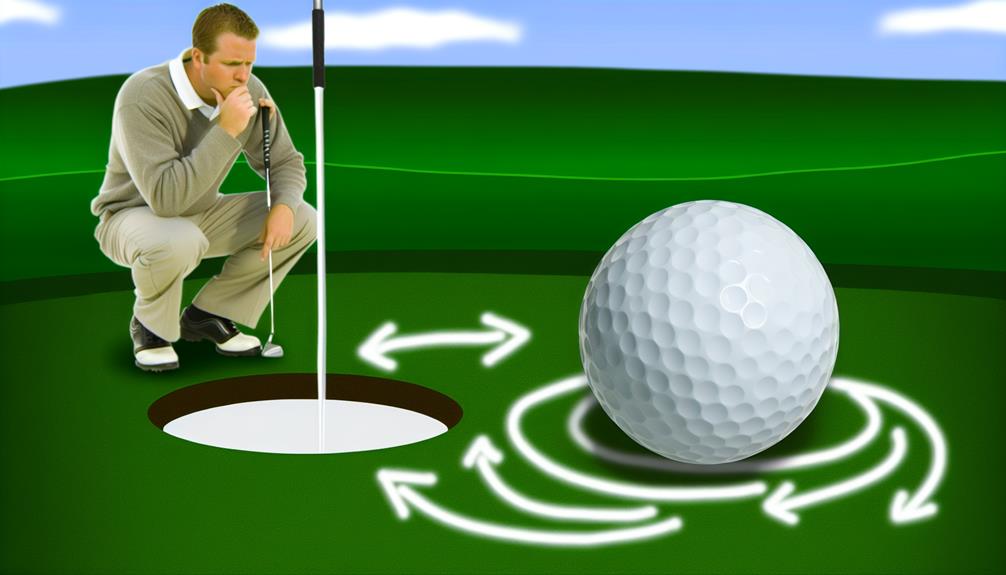Did you know that roughly 40% of all strokes in golf are putts? That's right, mastering the art of putting can drastically improve your overall game.
As you navigate through the world of golf, understanding the putting rules can seem like deciphering a complicated code. It's not just about getting the ball into the hole, it's about understanding the green, avoiding penalties, and adhering to etiquette.
Don't worry, it's not as daunting as it sounds. Stick around, and you'll discover the secrets that can turn you from a novice to a pro on the putting green.
The Basics of Golf Putting
In golf, mastering the art of putting is crucial to lowering your scores, and it begins with understanding the basic rules and techniques. One of the first skills you need to develop is your putting grip technique. It's not just about holding the club; it's about how you apply pressure and control the club during your stroke. The most common grip styles are the reverse overlap, the cross-handed, and the claw grip. Each has its pros and cons, and you should experiment to find what's most comfortable and effective for you.
Now, onto selecting putting clubs. Your putter is arguably the most important club in your bag, as you'll use it more than any other. When choosing a putter, you need to consider the length, weight, and design. Traditional blade putters are great for those with a straight putting technique, while mallet putters can offer more forgiveness and stability for those with an arc in their stroke. Remember, it's vital to select a putter that suits your individual style and comfort.
Understanding the Green
Mastering the green is a critical part of your golf game, as it's here where you'll make or break your score. Understanding the green comprises two key areas: green maintenance and hole locations.
Green maintenance is essential to the quality of your play. The smoother the green, the better your ball will roll. Keep in mind, changes in weather can affect the green's condition. Rain can make the green slower, while dry weather can speed it up. It's vital to understand these dynamics to best strategize your putting.
Hole locations are another critical aspect. They're often changed daily to ensure fair play and maintain the green's health. Their placements can significantly influence your putting strategy. For example, a hole located near the green's edge requires careful judgment, as overshooting could lead to a challenging recovery shot.
Common Putting Penalties
Navigating the world of golf, you'll likely encounter certain penalties that are unique to putting, impacting your overall game strategy and score. Understanding these common putting penalties is crucial for penalty avoidance and managing the penalty consequences.
One common putting penalty is hitting the ball more than once during a putt, also known as a 'double-hit'. The penalty for this is one stroke, plus you must count the original stroke.
Another penalty occurs when your ball moves after you've addressed it but before you've taken your stroke. The penalty for this is one stroke, and you must replace the ball.
Also, if you play the ball from the wrong place, the penalty is two strokes in stroke play or loss of hole in match play. Furthermore, touching your line of play on the green can result in a penalty stroke.
For penalty avoidance, it's crucial to understand these rules and their consequences. Penalties can quickly add up, significantly affecting your score. Therefore, always ensure you're abreast of the putting rules and penalties to avoid unpleasant surprises on the green.
With knowledge and practice, you'll navigate the putting penalties like a pro, enhancing your overall game.
Advanced Putting Techniques
To elevate your game to the next level, it's essential you're well-versed in advanced putting techniques. One of these methods involves mastering your stroke mechanics. Proper stroke mechanics are the backbone of successful putting. You'll want to ensure a smooth, pendulum-like motion, where your shoulders drive the action and your wrists stay stable. Your eyes should be directly over the ball and your focus should be on making contact with the ball at the sweet spot of your putter.
Club selection is another crucial factor in advanced putting. It's not just about using a putter, but knowing which type to use in different situations. For instance, a blade putter is great for fast greens, while a mallet putter provides more stability and is better suited for slower greens. Remember, the right club can make a significant difference in your stroke.
Lastly, practice reading the green. Understand the speed, slope, and grain of the green to anticipate the ball's path. By combining these advanced techniques – stroke mechanics, club selection, and reading the green – you'll be well on your way to becoming a more proficient putter in golf.
The Etiquette of Putting
Having honed your stroke mechanics, club selection, and green reading skills, you're already on a promising path, but understanding the etiquette of putting is equally important to truly excel in the game of golf.
When it comes to the green, you should be mindful of your putt alignment strategies, taking care not to step on your fellow players' putting lines. It's good practice to stand on the side of the putter's line, away from their peripheral vision, remaining still and silent during their stroke. This is a sign of respect for your opponent's concentration.
Mastering putting speed control is essential. Striking too hard can't only disrupt your overall performance but also damage the green, which is frowned upon in golf etiquette. Always ensure you're taking care of the course, repairing any pitch marks you may cause.
Lastly, be ready to play when it's your turn. Golf is a game of patience, but unnecessary delays in putting can cause frustration among your playing partners. Maintaining a swift pace of play respects everyone's time on the green.

